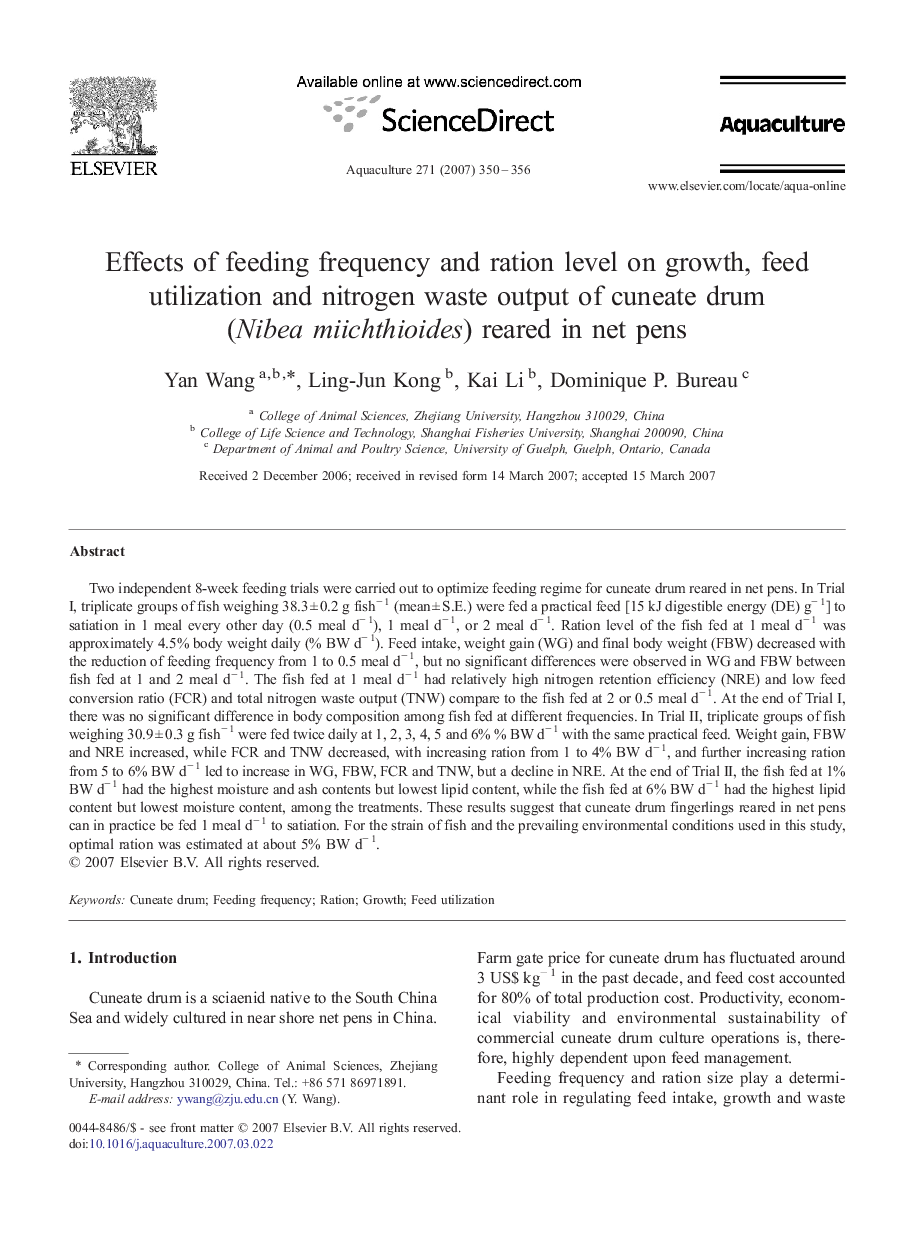| کد مقاله | کد نشریه | سال انتشار | مقاله انگلیسی | نسخه تمام متن |
|---|---|---|---|---|
| 2425159 | 1552971 | 2007 | 7 صفحه PDF | دانلود رایگان |

Two independent 8-week feeding trials were carried out to optimize feeding regime for cuneate drum reared in net pens. In Trial I, triplicate groups of fish weighing 38.3 ± 0.2 g fish− 1 (mean ± S.E.) were fed a practical feed [15 kJ digestible energy (DE) g− 1] to satiation in 1 meal every other day (0.5 meal d− 1), 1 meal d− 1, or 2 meal d− 1. Ration level of the fish fed at 1 meal d− 1 was approximately 4.5% body weight daily (% BW d− 1). Feed intake, weight gain (WG) and final body weight (FBW) decreased with the reduction of feeding frequency from 1 to 0.5 meal d− 1, but no significant differences were observed in WG and FBW between fish fed at 1 and 2 meal d− 1. The fish fed at 1 meal d− 1 had relatively high nitrogen retention efficiency (NRE) and low feed conversion ratio (FCR) and total nitrogen waste output (TNW) compare to the fish fed at 2 or 0.5 meal d− 1. At the end of Trial I, there was no significant difference in body composition among fish fed at different frequencies. In Trial II, triplicate groups of fish weighing 30.9 ± 0.3 g fish− 1 were fed twice daily at 1, 2, 3, 4, 5 and 6% % BW d− 1 with the same practical feed. Weight gain, FBW and NRE increased, while FCR and TNW decreased, with increasing ration from 1 to 4% BW d− 1, and further increasing ration from 5 to 6% BW d− 1 led to increase in WG, FBW, FCR and TNW, but a decline in NRE. At the end of Trial II, the fish fed at 1% BW d− 1 had the highest moisture and ash contents but lowest lipid content, while the fish fed at 6% BW d− 1 had the highest lipid content but lowest moisture content, among the treatments. These results suggest that cuneate drum fingerlings reared in net pens can in practice be fed 1 meal d− 1 to satiation. For the strain of fish and the prevailing environmental conditions used in this study, optimal ration was estimated at about 5% BW d− 1.
Journal: Aquaculture - Volume 271, Issues 1–4, 3 October 2007, Pages 350–356